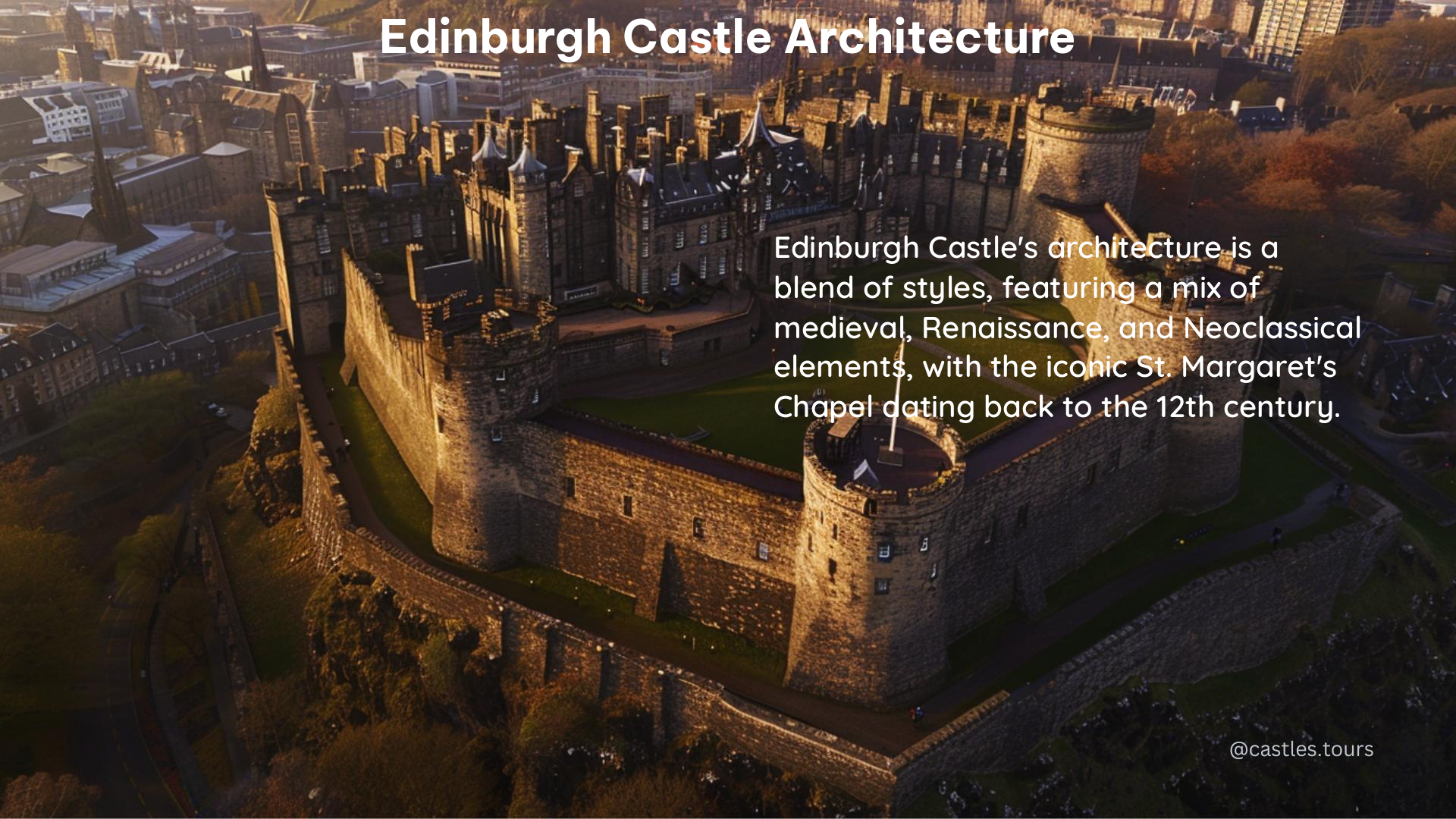Edinburgh Castle, a historic fortress perched atop an ancient volcanic rock, is a testament to Scotland’s rich architectural heritage. As one of the most iconic landmarks in the country, the castle’s architecture has evolved over the centuries, blending various styles and reflecting the tumultuous history of this remarkable site.
Materials and Construction
The foundation of Edinburgh Castle is built upon a bed of volcanic basalt rock, providing a natural defensive position that has been strategically important for centuries. The castle’s buildings are primarily constructed from Craigleith sandstone, a high-quality stone that has been used extensively throughout the city of Edinburgh.
Architectural Styles and Designs

The castle’s architecture is a tapestry of different styles, reflecting the various modifications and additions made over the course of its long history. The oldest surviving structure is St. Margaret’s Chapel, dating back to the early 12th century and showcasing the Romanesque architectural style.
The Great Hall, built by King James IV in the early 16th century, is a notable example of Renaissance detailing, with its ornate ceilings and large windows. The Half Moon Battery, constructed between 1573 and 1588, is a prominent feature on the castle’s eastern side, with its distinctive curved design.
Iconic Features and Structures
One of the castle’s most iconic features is the Royal Palace, which includes the Crown Room where the Honours of Scotland (the Scottish crown jewels) are displayed. The Gatehouse, built in 1888, is a cosmetic addition to the castle and features statues of Scottish heroes William Wallace and Robert the Bruce.
The Esplanade, originally laid out as a parade ground in 1753, is a significant feature of the castle’s architecture, serving as the stage for the annual Edinburgh Military Tattoo, a renowned military performance event.
Historical Significance and Conservation
Edinburgh Castle has played a crucial role in Scotland’s history, serving as a royal residence, arsenal, treasury, national archive, mint, prison, and military fortress. It has been involved in numerous historical conflicts, including the Wars of Scottish Independence and the Jacobite Rising of 1745.
In 1991, responsibility for the castle passed to Historic Scotland, and it was designated a Scheduled Ancient Monument in 1993. The castle is now a popular tourist attraction, with over 2.2 million visitors in 2019, and is part of the Old and New Towns of Edinburgh World Heritage Site, valued at over £1.2 billion.
Unique Tours and Events
Visitors to Edinburgh Castle can experience the castle’s rich history and architecture through specialized tours, such as the one to David’s Tower, which offers unique insights into the castle’s past. The castle also hosts significant events, including the Edinburgh Military Tattoo and New Year’s Eve celebrations, which showcase the castle’s architectural grandeur.
In conclusion, Edinburgh Castle’s architecture is a captivating blend of styles and features, reflecting the castle’s long and tumultuous history. From the ancient Romanesque chapel to the Renaissance-inspired Great Hall, the castle’s architecture continues to captivate and inspire visitors from around the world.
References:
– Cobble Tales. (n.d.). Edinburgh Castle: A tour to David’s Tower. Retrieved from https://www.cobbletales.com/edinburghs-lost-architecture-tour-davids-tower/
– Designing Buildings Wiki. (2022, February 19). Edinburgh Castle. Retrieved from https://www.designingbuildings.co.uk/wiki/Edinburgh_Castle
– Wikipedia. (n.d.). Edinburgh Castle. Retrieved from https://en.wikipedia.org/wiki/Edinburgh_Castle
– Go Construct. (2022, October 11). Iconic buildings: Edinburgh Castle. Retrieved from https://www.goconstruct.org/why-choose-construction/whats-happening-in-construction/iconic-buildings-edinburgh-castle/
– Edinburgh Castle. (n.d.). History of the castle. Retrieved from https://www.edinburghcastle.scot/the-castle/history
